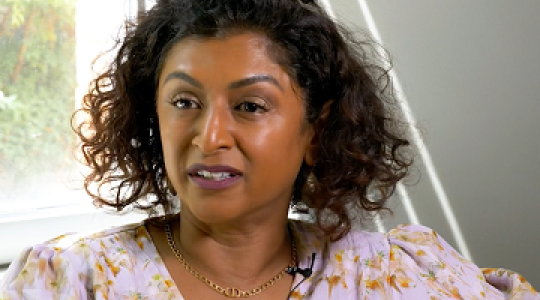
Lean Six Sigma (LSS) provides a structured method of achieving results that create value and reduce burdens through business improvement initiatives. Results are amplified when LSS methodology is supported by a skilled leader, able to connect the dots and see the big picture, focusing on high levels of quality, safety, satisfaction and morale.
Meet Courtney Holcomb.
A Network Program Manager — LSS Black Belt in the Medical Economics department. Courtney describes herself as a detail-oriented process engineer. It’s a title that might sound sterile until she starts speaking about what she does.
“Recently, I contributed to the development of the Integrated Clinic Support (ICS) model. The team and I conducted a 62-practice analysis, pulling in metrics to identify opportunities and tools that could make a difference in a provider’s practice. My role was to connect the dots in a way that would assist a clinic with organizational resources and subject matter experts — RAF, billing and coding, patient education, care management.”
It’s a weighty endeavor and one Courtney appears to thrive on.
“The overarching goal is to create integrated, scalable solutions that can be rolled out across the network. We want to optimize care at every practice, ensuring individual providers experience a measurable benefit. It’s important that physicians have the time and resources to devote themselves to patient care.”
Courtney Holcomb, MSH, CSSBB, CCMP, CPHQ, didn’t arrive at her credentials or at SWHR in typical fashion. A United States Navy veteran, she completed her associates degree while serving in the military.
A personal heart condition had sparked an interest in healthcare, plus she was spending time with her great-grandmother who faced a range of health issues
“I saw firsthand how complicated it could be trying to navigate the healthcare system. I saw a need for process improvement connected to quality of care. That was my epiphany moment.”
She continued her education, earning a Bachelor of Health Administration degree, followed by a Master of Health Sciences degree in aging services management.
Layer by layer, she began to build breadth of experience, starting out in geriatric care, supporting interdisciplinary teams with process improvements, identifying resources and writing grants to address service needs not covered by insurance companies.
As she grew in knowledge, she pursued internships in hospital environments. “I enjoyed the inpatient setting and I got to work with amazing teams like risk and quality. This experience revealed a need for data integrity and better utilization of process and outcome metrics. That’s when I decided to advance (from an LSS green belt) to black belt certification.”
Gemba Walks
Subsequently, Courtney received an opportunity to move into the corporate team at a large nonprofit healthcare system, designing programs with a more widespread approach. “Still supporting interdisciplinary teams,” she explains, “but assessing opportunities within sepsis, open heart surgeries, heart failure and how to improve — programs that spanned across all hospitals in the system.
“I’d conduct Gemba Walks, go through the facilities and observe the work as it happened, map out differences in how personnel approached care, then identify how to reduce variations in such a way that every hospital could implement safely and efficiently, without harm to patient and without burden to staff.”
By this time, Courtney had worked in small clinics, large hospitals and at the corporate level. Applying process engineering to her own situation, she tried to assess what would be the next logical step in her development.
“I wanted greater involvement with the primary care provider and coordination of care across multiple levels of care. How could I take what I’d learned in the hospital setting and transfer this knowledge to an outpatient setting?”
Briefly, she worked as a Quality Performance Advisor for an integrated delivery network, where she was able to connect with outpatient practices.
Accountable care comes calling
Navigating work fluctuations created by the pandemic, Courtney was intrigued when an Accountable Care Organization (ACO) contacted her out of the blue.
The President and CEO had seen Courtney’s resume and offered to create a new position as their ACO Program Manager, giving her the opportunity to work with physician groups and hospitals developing programs that would benefit the community.
She shadowed physicians and medical officers, interviewing people and designing programs around their needs, addressing topics like quality, RAF, annual wellness visits, and community resources.
After concluding her new employer wasn’t the best personal fit — and desiring to be closer to family — she turned her attention toward Texas.
“SWHR was one of the top ACOs in the country. The more I learned, the more I wanted to help make a difference in this organization.”
Putting the organization’s purpose into action, Courtney not only contributed to the Integrated Clinic Support (ICS) project, but also to an Emergency Department (ED) diversion initiative, striving to reduce unplanned hospitalization.
Embracing the ACO model
Medical Economics has a broad range of initiatives planned for 2023.
“The beauty of the ACO model is that we can take the dollars we save by implementing efficiencies and funnel those into new programs that continually transform care for patients. Whether it’s new methodologies to improve treatment for chronic kidney disease or step therapies for patients with joint issues to reduce unnecessary surgeries – the focus is to find workable, scalable solutions that are patient-centered. We experiment, we measure, we modify, we test again and then we implement system wide.”
Does it sound easy? It’s not.
“Engineering new processes takes time. What we’re doing requires that people change deeply engrained behaviors.”
Courtney is doing work that’s meaningful to her — and meaningful to others, as well. “Being an LSS black belt is about continuous improvement. Each new initiative we investigate is one more example of how SWHR is building a better way to care.”


